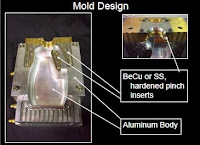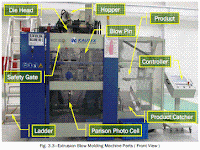This standard is issued under the fixed designation D 96; the number immediately following the designation indicates the year of original
adoption or, in the case of revision, the year of last revision. A number in parentheses indicates the year of last reapproval. A superscript
epsilon (e) indicates an editorial change since the last revision or reapproval.
This method has been approved by the sponsoring committees and accepted by the Cooperating Societies in accordance with established
procedures.
This test method has been adopted for use by government agencies to replace Method 3003 of Federal Test Method Standard No. 791b.
Annex A1 is under revision and will be included in subsequent revisions to this standard.
1. Scope
1.1 This test method covers the centrifuge method for
determining sediment and water in crude oil during field
custody transfers. This test method may not always provide the
most accurate results, but it is considered the most practical
method for field determination of sediment and water. When a
higher degree of accuracy is required, the laboratory procedure
described in Test Methods D 4006, D 4377 or D 473 should be
used.
NOTE 1—Water by distillation and sediment by extraction are considered
the most accurate methods of determining sediment and water in
crude oils. As such, these methods should be employed to resolve
differences in results from variations of this procedure or between this
procedure and other methods, or in the case of a dispute between parties.
1.2 This standard does not purport to address all of the
safety concerns, if any, associated with its use. It is the
responsibility of the user of this standard to establish appropriate
safety and health practices and determine the applicability
of regulatory limitations prior to use.
2. Referenced Documents
2.1 ASTM Standards:
D 235 Specification for Mineral Spirits (Petroleum Spirits)
(Hydrocarbon Drycleaning Spirits)2
D 362 Specification for Industrial Grade Toluene2
D 473 Test Method for Sediment in Crude Oils and Fuel
Oils by the Extraction Method3
D 846 Specification for Ten-Degree Xylene2
D 1209 Test Method for Color of Clear Liquids (Platinum-
Cobalt Scale)2
D 3699 Specification for Kerosine4
D 4006 Test Method for Water in Crude Oil by Distillation4
D 4057 Practice for Manual Sampling of Petroleum and
Petroleum Products4
D 4177 Practice for Automatic Sampling of Petroleum and
Petroleum Products4
D 4377 Test Method for Water in Crude Oils by Potentiometric
Karl Fischer Titration4
E 1 Specification for ASTM Thermometers5
E 542 Practice for Calibration of Volumetric Ware6
2.2 API Standards:7
Manual of Petroleum Measurement Standards
Chapter 8, Sampling Petroleum and Petroleum Products
Chapter 10, Sediment and Water
3. Summary of Test Method
3.1 Known volumes of crude oil and solvent (water saturated
if required) are placed in a centrifuge tube and heated to
60°C 6 3°C (140°F 6 5°F). After centrifugation, the volume
of the sediment-and-water layer at the bottom of the tube is
read.
NOTE 2—It has been observed that for some waxy crude oils, temperatures
of 71°C (160°F) or higher may be required to melt the wax crystals
completely so that they are not measured as sediment. If temperatures
higher than 60°C (140°F) are necessary to eliminate this problem, they
may be used with the consent of the parties involved. If water saturation
of the solvent is required, it must be done at the same temperature.
4. Significance and Use
4.1 A determination of sediment and water content is
required to determine accurately the net volumes of crude oil
involved in sales, taxation, exchanges, inventories, and custody
transfers. An excessive amount of sediment and water in crud.
---------------------
1 This test method is under the jurisdiction of Committee D-2 on Petroleum
Products and Lubricants and is the direct responsibility of Subcommittee
D02.02.OB on Sediment and Water (Joint ASTM-JP).
Current edition approved March 25, 1988. Published December 1988. Originally
published as D 96 – 63T. Last previous edition D 96 – 73 (1984).e1
2 Annual Book of ASTM Standards, Vol 06.04.
3 Annual Book of ASTM Standards, Vol 05.01.
4 Annual Book of ASTM Standards, Vol 05.02.
5 Annual Book of ASTM Standards, Vol 14.03.
6 Annual Book of ASTM Standards, Vol 14.02.
7 Available from American Petroleum Institute, 1220 L St., Northwest, Washington,
DC 20005.
An American National Standard
British Standard 4385
American Association State
Highway Transportation Standard
AASHTO No. T55
AMERICAN SOCIETY FOR TESTING AND MATERIALS
100 Barr Harbor Dr., West Conshohocken, PA 19428
Reprinted from the Annual Book of ASTM Standards. Copyright ASTM
1 This test method is under the jurisdiction of Committee D-2 on Petroleum
Products and Lubricants and is the direct responsibility of Subcommittee
D02.02.OB on Sediment and Water (Joint ASTM-JP).
Current edition approved March 25, 1988. Published December 1988. Originally
published as D 96 – 63T. Last previous edition D 96 – 73 (1984).e1
2 Annual Book of ASTM Standards, Vol 06.04.
3 Annual Book of ASTM Standards, Vol 05.01.
4 Annual Book of ASTM Standards, Vol 05.02.
5 Annual Book of ASTM Standards, Vol 14.03.
6 Annual Book of ASTM Standards, Vol 14.02.
7 Available from American Petroleum Institute, 1220 L St., Northwest, Washington,
DC 20005.
An American National Standard
British Standard 4385
American Association State
Highway Transportation Standard
AASHTO No. T55
AMERICAN SOCIETY FOR TESTING AND MATERIALS
100 Barr Harbor Dr., West Conshohocken, PA 19428
Reprinted from the Annual Book of ASTM Standards. Copyright ASTM






































